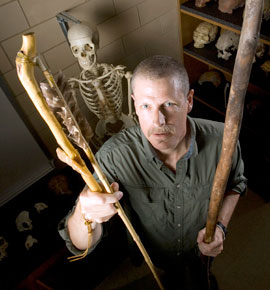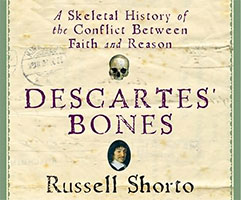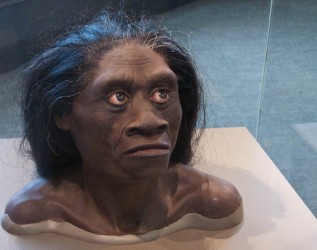
Anthropologist Steven Churchill from Duke University recently gave a fascinating lecture [listen] on the discovery of projectile weapons by early Homo sapiens and subsequent effects on large carnivores (extinction!) and human evolution.
His basic premise is that sometime in the past 250,000 years humans discovered how to kill at a distance. This allowed us to crowd-out the various carnivore “gilds” including our co-evolved cousins the Neanderthals. In this photo he holds a spear-throwing projectile weapon (atlatl) in his right hand and a reproduction of a Neanderthal thrusting spear in his left.
These weapons have also had a profound effect on modern human conflicts. When we fight with thrusting weapons, the probability of injury is a linear function of the number of combatants: 0.5 with two on one, 0.33 with three on one, 0.25 with four on one, etc. So the strategy is to bring lots of friends to a fight! With projectile weapons and the function becomes exponential with the probability of injury decreasing by the square: 0.25 with two on one, 0.11 with three on one, and 0.06 with four to one!

 This entertaining little book sheds light on many subjects. First, it is a concise biography of the life and ideas of
This entertaining little book sheds light on many subjects. First, it is a concise biography of the life and ideas of 